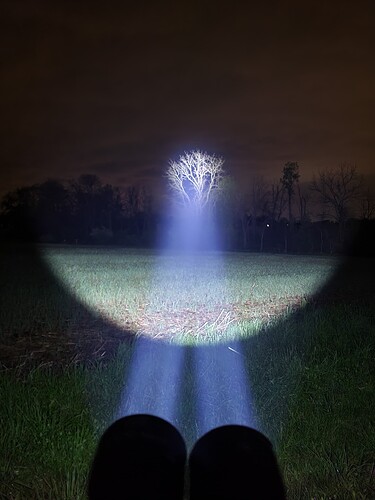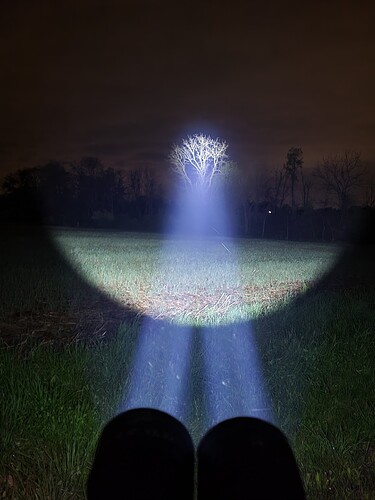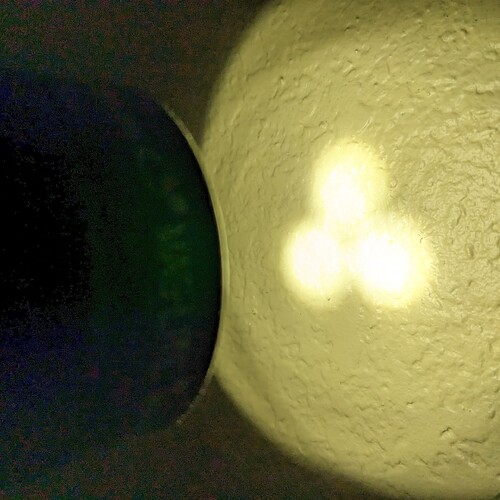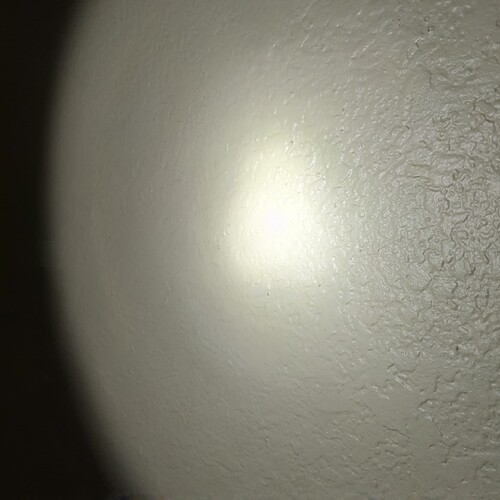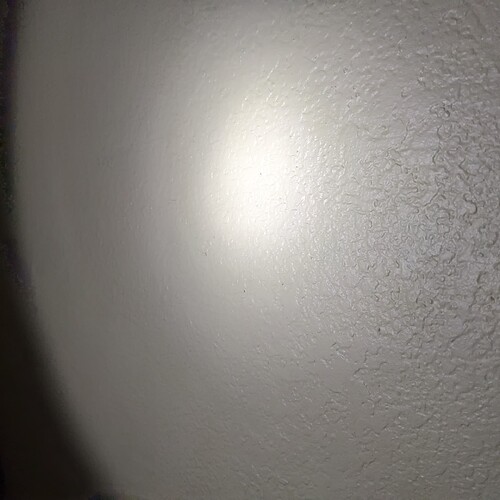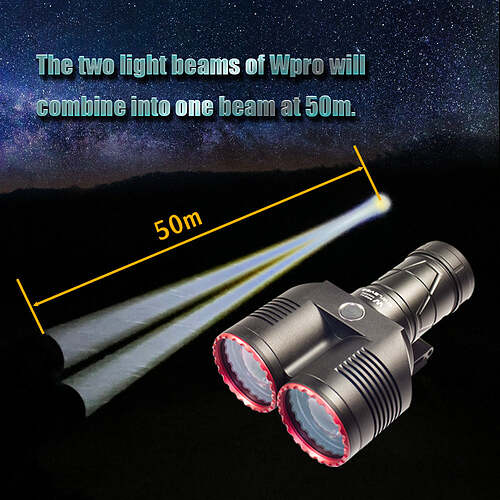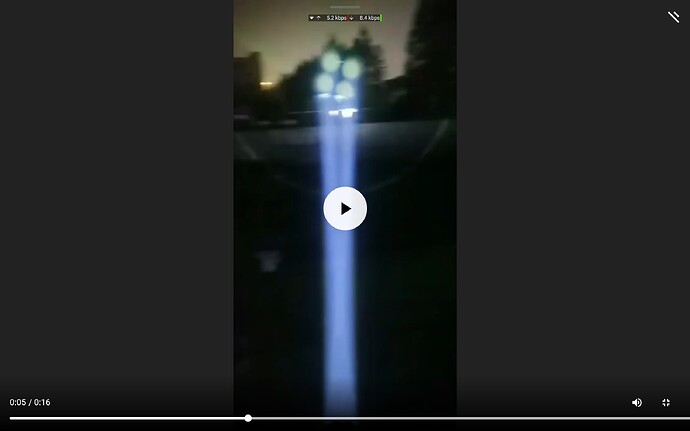Why do the beams of the Maxtoch owl eyes converge to a point but not diverge again after that point? Shouldn’t we see the beams diverge, if pointed to the infinite sky?
Because they’re Focused properly. They do merge after a distance. Here’s one that I used to have. Modified with 2 X SBT 90.2 in it.
The beams do not converge, they are parallel. They only appear to be converging.
I’ve wondered how they are focused though. I have a V1 & V2 and both, if held up to the eye, level, one head on the left, one on the right, like you are bore sighting it, on each the head on the left side is always higher than the right. Almost as if they would end up being aligned vertically at distance as opposed to horizontally. The heads are heavily glued at the base, but they appear to be side by side with no difference in mounting angle between the two heads. I took my V1 apart a few times and the lenses are a pain to get centered but doable. I have read it is because both heads are in Parallel with each other, exactly side-by-side, so that at distance, as the beams diverge, they end up overlapping each other, but I don’t think that’s the case? Why would one be higher than the other?
Good question.
This. The emitters are so close together relative to the useful throw and the beams are also >0° so physical convergence would be fixed (likely at the wrong distance) with negligible benefit.
Parallel lines appear to converge to the eye at a point infinitely far away–think of parallel train tracks and imagine following it into the distance; the pair of rails appear to get arbitrarily close. For more detail (and a more satisfying explanation), you might want to look into projective geometry.
Nice. It’s called “vanishing point”
Practical demonstration with an old modified maglite with three luxeon IIIs in separate parallel reflectors.
About 3"/75mm. Individual beams are distinct.
About 12"/300mm. This is about the maximum distance where the 3 beams are apparent.
About 24"/600mm. The beams have effectively converged and this is the general characteristic at all subsequent distances.
Really strange, here it says that the maxtorch “combine into one beam at around 50 meters”, that’s over 3900m left to go to max distance according to https://maxtochstore.com/products/maxtoch-owleyes-w-prov2-0-lep-spotlight?_pos=2&_sid=fa1ce3c0a&_ss=r
Even if there’s a vanishing point at 50m, with 3900m left to go, shouldn’t we see the beam gradually separate, when pointed to the sky?
I believe you got the answer. Even (single) LEP beams diverge gradually, like a flashlight beam, though not nearly as quickly. At 50 meters the beam converges because besides the vanishing point effect, there’s the each beam getting larger effect, so they merge together. Diffusion effect also is at play here.
But does this solve the mystery? If you think it does, can you explain this?
In this video the emitters are not at the center of the convex lens, so the resulting beams are not parallel. In this case the angle between the 4 beams exceeds the angle of divergence of a single beam, so the beams will never merge into 1.
The reason why LEP beams combine is indeed due to 1) vanishing point effect due to parallel alignment and 2) divergence of each individual beam. The beams are not lines, not even cylinders, but cones expanding out.
